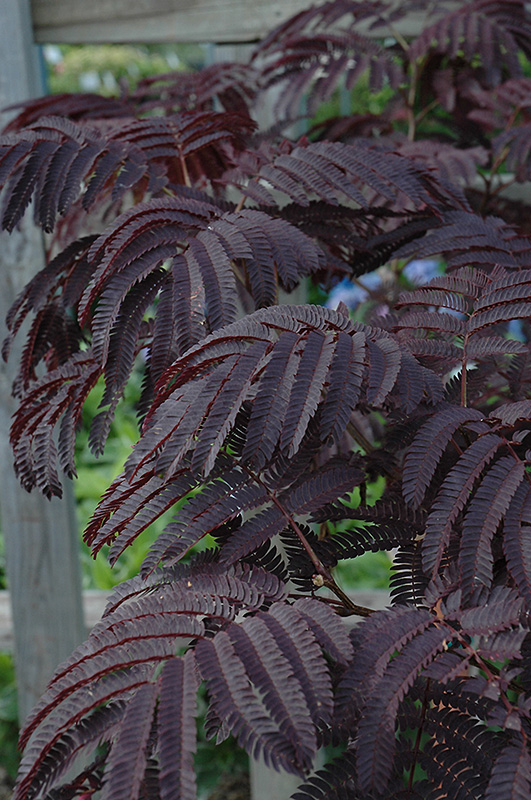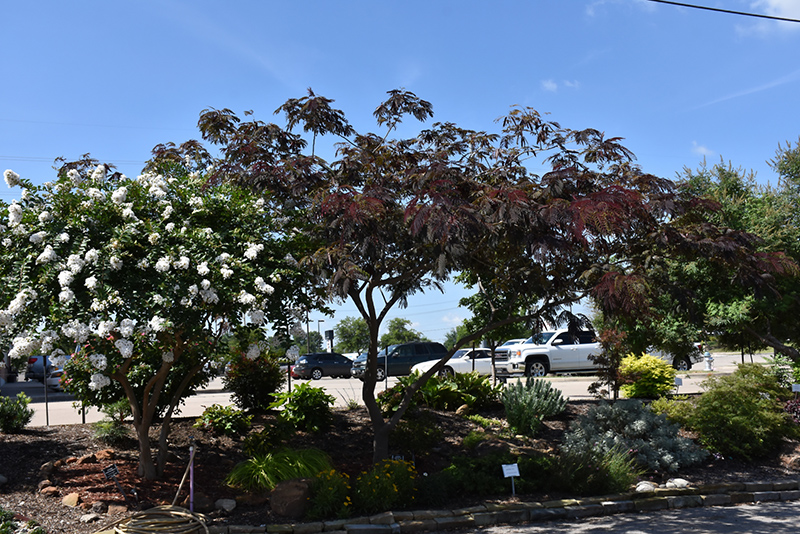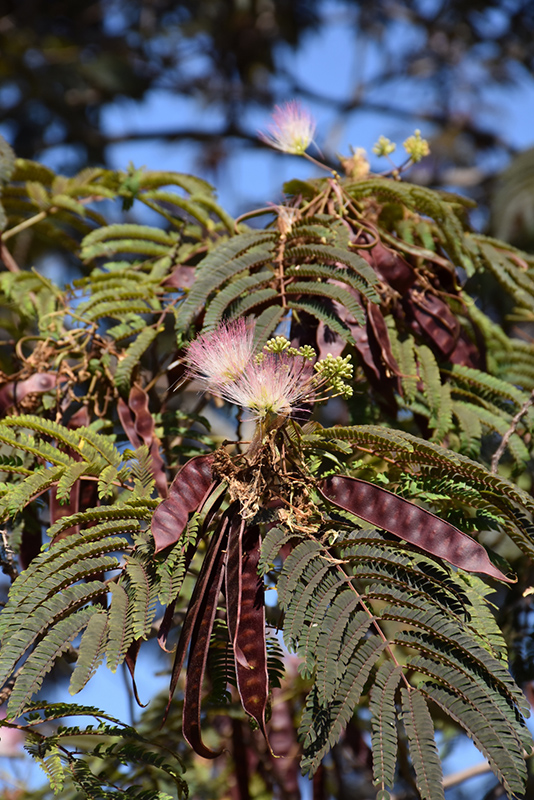Mimosa, Summer Chocolate Albizia julibrissin 'Summer Chocolate' Height: 20 feet Spread: 15 feet
Sunlight:
Hardiness Zone: 6b Other Names: Silktree Description: Attractive airy foliage emerges coppery-green and matures to deep burgundy; an open umbrella-like form make this a highly desired tree, leaves tend to close for the night; interesting and graceful pink fuzzy flowers are showy and fragrant Ornamental Features Mimosa, Summer Chocolate features showy fragrant pink pincushion flowers along the branches in mid summer. It has attractive burgundy deciduous foliage which emerges coppery-bronze in spring. The ferny bipinnately compound leaves are highly ornamental but do not develop any appreciable fall color. The fruits are showy brown pods displayed in early fall. Landscape Attributes Mimosa, Summer Chocolate is a deciduous tree with a more or less rounded form. It lends an extremely fine and delicate texture to the landscape composition which can make it a great accent feature on this basis alone. This tree will require occasional maintenance and upkeep, and is best pruned in late winter once the threat of extreme cold has passed. It has no significant negative characteristics. Mimosa, Summer Chocolate is recommended for the following landscape applications; Planting & Growing Mimosa, Summer Chocolate will grow to be about 20 feet tall at maturity, with a spread of 15 feet. It has a high canopy with a typical clearance of 6 feet from the ground, and is suitable for planting under power lines. As it matures, the lower branches of this tree can be strategically removed to create a high enough canopy to support unobstructed human traffic underneath. It grows at a fast rate, and under ideal conditions can be expected to live for 60 years or more. This tree should only be grown in full sunlight. It does best in average to evenly moist conditions, but will not tolerate standing water. This plant should be periodically fertilized throughout the active growing season with a specially-formulated acidic fertilizer. It is not particular as to soil type or pH, and is able to handle environmental salt. It is highly tolerant of urban pollution and will even thrive in inner city environments. This is a selected variety of a species not originally from North America.![]()
![]()
![]()
![]()
![]()
![]()
![]()
![]()
![]()
![]()
![]()
![]()



